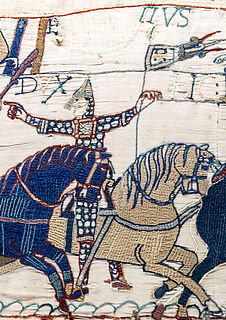
Embroidery is the craft of decorating fabric or other materials using a needle to apply thread or yarn. Embroidery may also incorporate other materials such as pearls, beads, quills, and sequins. In modern days, embroidery is usually seen on caps, hats, coats, overlays, blankets, dress shirts, denim, dresses, stockings, and golf shirts. Embroidery is available with a wide variety of thread or yarn colour.

The Royal School of Needlework (RSN) is a hand embroidery school in the United Kingdom, founded in 1872 and based at Hampton Court Palace since 1987.
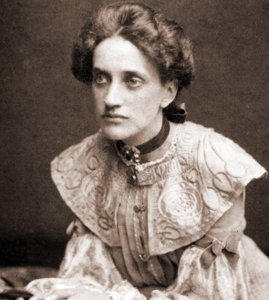
Ann Macbeth was a British embroiderer, designer, teacher and author, a member of the Glasgow Movement and an associate of Charles Rennie Mackintosh. She was also an active suffragette and designed banners for suffragists and suffragettes movements.
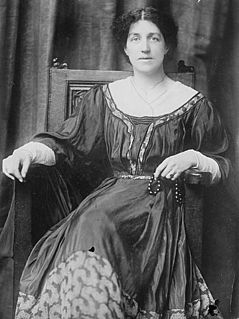
Mary "May" Morris was an English artisan, embroidery designer, jeweller, socialist, and editor. She was the younger daughter of the Pre-Raphaelite artist and designer William Morris and his wife and artists' model, Jane Morris.
The Embroiderers' Guild is the UK's leading educational charity promoting embroidery.

Valerie Campbell-Harding was an experimental textile art designer and author of 24 books.
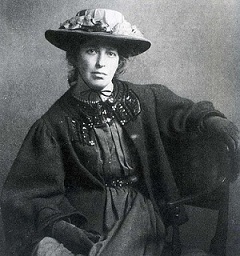
Jessie Newbery was a Scottish artist and embroiderer. She was one of the artists known as the Glasgow Girls. Newbery also created the Department of Embroidery at the Glasgow School of Art where she was able to establish needlework as a form of unique artistic design. She married the director of the Glasgow School of Art, Francis Newbery, in 1889.

Evelyn Gleeson was an English embroidery, carpet, and tapestry designer, who along with Elizabeth and Lily Yeats established the Dun Emer Press.
Kathleen Laurel Sage is a freelance designer and embroiderer who produces a wide range of textile works, ranging from traditional items through to 3 dimensional pieces in machine embroidery and stump work. Sage is particularly well known for teaching classes on how to use soldering irons, heat tools and organza to create floral panels.

Helen Paxton Brown also known as "Nell", was an artist associated with the Glasgow Girls. Born in Hillhead, Glasgow to a Scottish father and English mother and she spent most of her life in Glasgow. Best known for her painting and embroidering she also worked in a range of mediums such as leather, book binding and also painted china.

Mary Jane Newill (1860–1947) was an English painter, embroiderer, teacher, book illustrator and stained glass designer associated with the Arts and Crafts Movement. As a stained glass artist, she was a disciple of stained glass designer, Selwyn Image. Newill was a member of the Birmingham Group, an informal group of artists and craftsment that worked in Birmingham, England.
The 62 Group of Textile Artists is an international group of professional textile artists founded in the United Kingdom in 1962. The group is a Constituted Artists Co-operative, focussed on exhibiting the work of its members in the UK and overseas. Membership of the group is achieved through a selection process. The 62 Group requires members to submit work to a selection panel of their peers for every exhibition "If members fail to submit, or are rejected for three successive exhibitions, then membership is forfeited...a policy which ensures that the group consistently produces exciting work." The increased profile of textile art and its evolution in the latter part of the 20th century "has to a great extent been dictated by members of the 62 Group."
Emilie Anna Maria Kornerup née Bruzelius (1918–2006) was a Swedish-Danish textile artist who specialized in embroidery and tapestry. She produced works for decorating public buildings and churches, including the Danish Parliament and Roskilde Cathedral. Kornerup was also active as a teacher with the Haandarbejdets Fremme textile guild and the Danish School of Arts and Crafts.
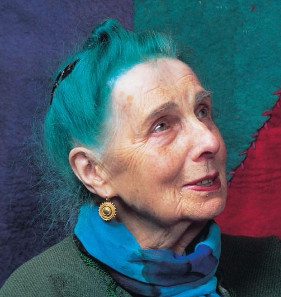
Constance Mildred Howard, later Constance Parker, was an English textile artist and embroiderer who had a profound impact on the development and teaching of those subjects in Britain. The Constance Howard Gallery, part of Goldsmiths, University of London, is named in her honour.
Louisa Pesel (1870–1947) was an English embroiderer, educator and textile collector. She was born in Bradford, and studied textile design at the National Art Training School, causing her to become interested in decorative stitchery. She served as the Director of the Royal Hellenic School of Needlework and Lace in Athens, Greece from 1903-1907. Pesel served as the first President of the Embroiderers' Guild. She produced samplers for the Victoria and Albert (V&A) Museum and cushions, kneelers, alms bags and a lectern carpet for Winchester Cathedral. She collected textiles extensively, and following her death in Winchester in 1947, her collection went to the University of Leeds.
Lilian Margery Dring was a British artist known for her paintings, poster designs and textile designs. needlework and embroidery work.
Margaret Helen Swain was an English embroidery and textile historian. Trained as a nurse in London, she began a career as a historian after noticing no history about Ayrshire whitework embroidery in books following an exhibition at the Signet Library which she visited. Swain's research on the subject resulted in the publication of several books, she held two exhibitions, and wrote about embroidery, household textiles and tapestries in museum journals, magazines and newspapers. She was awarded an honorary Master of Arts degree from the University of Edinburgh in 1981. A pencil portrait of Swain was made by Elizabeth Blackadder and a collection of papers and objects related to her career are stored at National Museums Scotland.
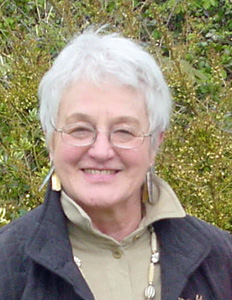
Audrey Walker was an accomplished textile artist, embroiderer and teacher, who was active from the 1970s and 1990s in United Kingdom. Walker became known for developing an innovative style of embroidery based on fine threads applied by machine and by hand, to create striking figurative wall-hung works of art. Walker described her work as evolving from fairly fluid ideas, and the process as being akin to drawing with fabrics.
Winsome Douglas was a British embroiderer and teacher active in the United Kingdom in the 1950s and 1960s. She was born in Hartlepool in County Durham in 1919, and died at the age of 97 on 28 December 2016 in Hartlepool.
Dorothy Angus (1891–1979), was a Scottish embroidery artist














